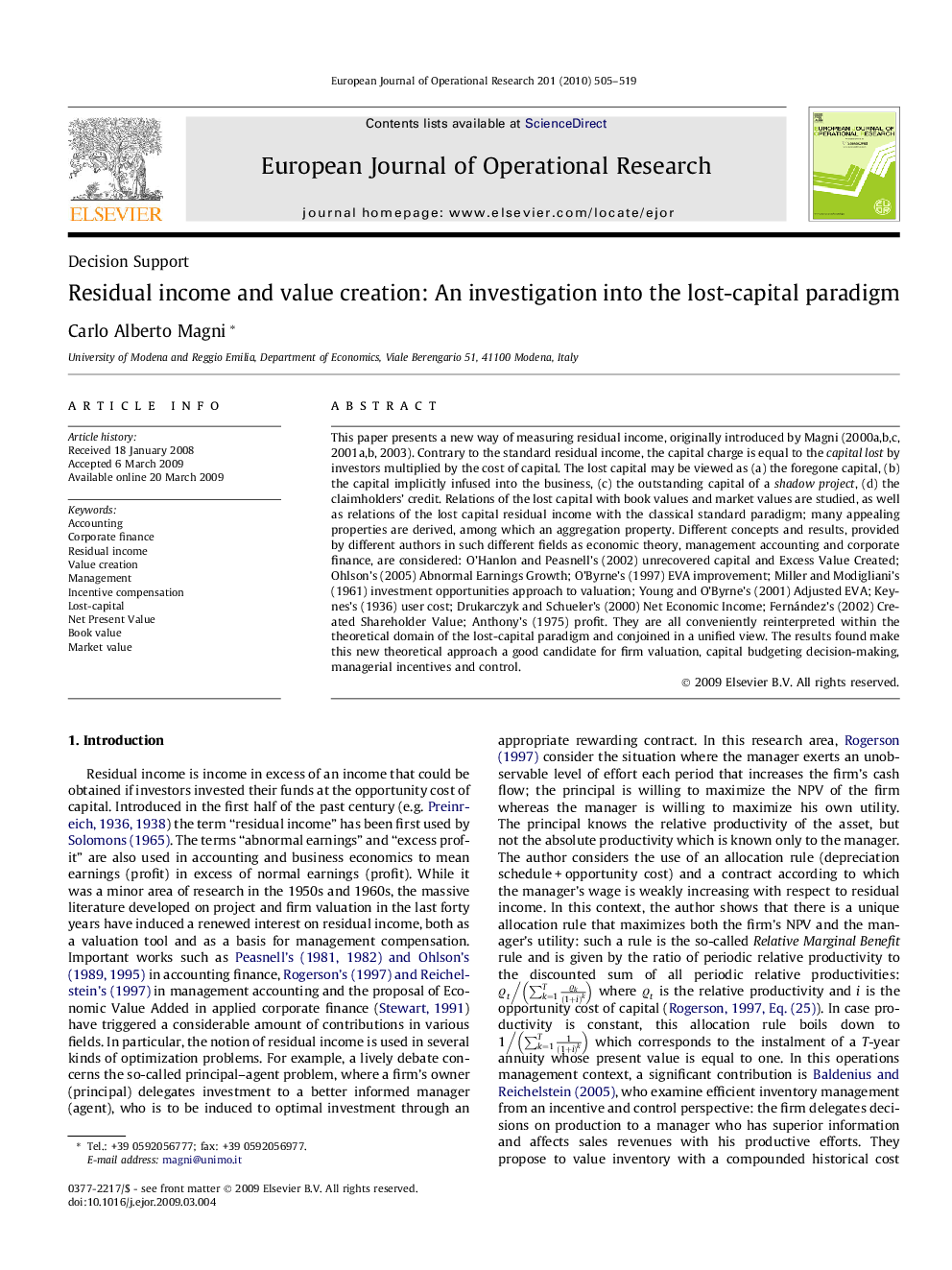| Article ID | Journal | Published Year | Pages | File Type |
|---|---|---|---|---|
| 482393 | European Journal of Operational Research | 2010 | 15 Pages |
This paper presents a new way of measuring residual income, originally introduced by Magni (2000a,b,c, 2001a,b, 2003). Contrary to the standard residual income, the capital charge is equal to the capital lost by investors multiplied by the cost of capital. The lost capital may be viewed as (a) the foregone capital, (b) the capital implicitly infused into the business, (c) the outstanding capital of a shadow project, (d) the claimholders’ credit. Relations of the lost capital with book values and market values are studied, as well as relations of the lost capital residual income with the classical standard paradigm; many appealing properties are derived, among which an aggregation property. Different concepts and results, provided by different authors in such different fields as economic theory, management accounting and corporate finance, are considered: O’Hanlon and Peasnell’s (2002) unrecovered capital and Excess Value Created; Ohlson’s (2005) Abnormal Earnings Growth; O’Byrne’s (1997) EVA improvement; Miller and Modigliani’s (1961) investment opportunities approach to valuation; Young and O’Byrne’s (2001) Adjusted EVA; Keynes’s (1936) user cost; Drukarczyk and Schueler’s (2000) Net Economic Income; Fernández’s (2002) Created Shareholder Value; Anthony’s (1975) profit. They are all conveniently reinterpreted within the theoretical domain of the lost-capital paradigm and conjoined in a unified view. The results found make this new theoretical approach a good candidate for firm valuation, capital budgeting decision-making, managerial incentives and control.
